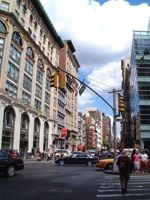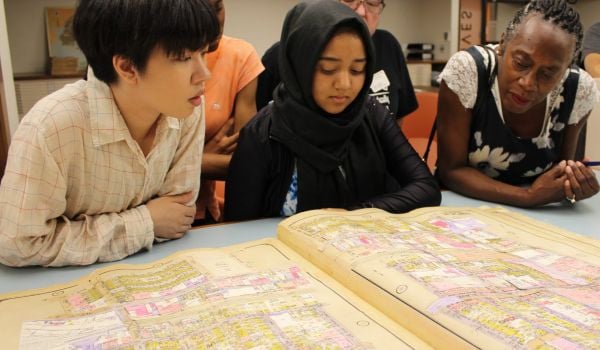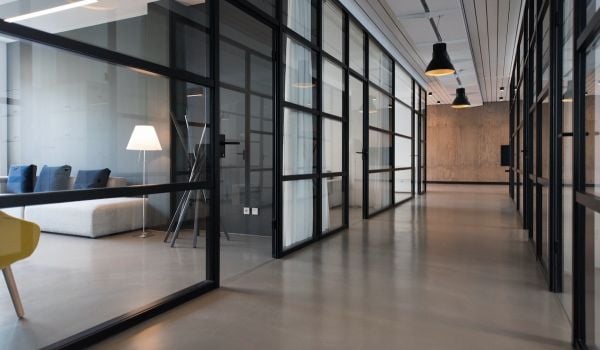Frederick was a field mouse who spent the entire fall sitting on a rock, while his fellow mice scurried about gathering grains for winter. Months later, in depths of cold and dark, according to his creator, the great children’s book author Leo Lionni, all the grain had been eaten and the peckish mice turned to Frederick and said, essentially, what are you good for. He began to spin stories for them, entertaining them until spring.
While some enlightened city planners have been thinking like Frederick, others are still acting like run-of-the-mill mice. In the past 15 years, small cities from Peekskill (NY) to Paducah (KY) have actively recruited artists to reinvigorate city centers depleted by a century of industry’s boom and bust. Old buildings have been rehabbed and filled with the work of the mind: art, craft, music. These activities in turn draw in tourists and encourage locals to stay and linger, rather than flee to suburbs.
The model for many of these cities is New York City’s SoHo, where artists flocked in the ‘70s drawn by huge loft spaces vacated by industry. Buildings constructed in the late 19th and early 20th centuries turned out to be perfect for the big ideas of contemporary artists and musicians. The fight to get work-live lofts took a decade, and by then, galleries and developers had discovered SoHo as well. But the template was set. First come the artists, then the cafes, then the shops, and then, at the apex, the developers and moneyed professionals.
Ironically, though, just as this model has firmly taken hold in the public imagination, some cities are trying to eliminate the artists and jump right to the developers, so well has loft living been marketed around the country. Case in point is Jersey City, NJ, with waterfront views of Manhattan’s Chelsea, the densest and liveliest arts district in the world.
There was a time when artists were tolerated. Artists moved in to an old warehouse at 111 First Street in the 1980s, already priced out of SoHo and just about everywhere else in Manhattan. Jersey City began to think about preserving what it had, talking about an arts district in the 90s and formalizing it in various zoning laws passed through 2004. But by that point, Jersey City real estate was rising along with the rest of the country’s, and developers were building as tall as they could. Housing for professionals looking for views and an easy commute to New York was paramount.
The owner of 111 First, New Gold Equities, sued the city, arguing he should be able to build more on the site and that repairs to the dilapidated building were near impossible. The city settled, and today 111 First is an empty lot. There are plans for a 30-something-story Rem Koolhaas-designed building.
Yet 111 First lives on as a rallying cry for both artists and developers. Artists and preservationists are worried that other historic industrial buildings, along with early promises about subsidized housing, will be tossed out. Developers of other properties want their build heights elevated, too. Precedents have been set. This week, the Jersey City council heard arguments as to why another historically designated warehouse, formerly a Manishewitz factory, should make way for a 35-plus-story condo building. “The city hasn’t stood by its zoning,” says city councilperson Steve Fulop, who supports the arts district. Fulop, along with preservationists, says that current mayor Jerramiah Healy, who came into office in fall 2004, lost interest in the arts district in the face of demands from deep-pocketed real estate developers. Today, the arts district consists mainly of a few subsidized rentals in two converted warehouse buildings and a promised theater in the bottom of the old Manishewitz building.
The speed of arts-driven gentrification can overtake—and even skip—the artists themselves. If your post-industrial city is close enough to those things artists are supposed to usher in—nicely renovated properties, a few decent cafes, a bespoke dress shop, a pet store, a yoga studio—then it just needs the idea of art to sanctify old spaces as livable, not necessarily the low-income artists themselves.
In Jersey City—as in Williamsburg, Brooklyn and the Pearl District in Portland—artists showed how drafty old warehouses could be fixed up and turned into a glorious mixed-use neighborhood, full of people working and walking and, eventually, spending money day and night. (In her recent book, “The Warhol Economy,” Professor Elizabeth Currid quantifies how substantially culture contributes to a city’s bottom line and to its brand: art and New York, for instance, have become near synonyms, the way couture and Paris have been for centuries.) But unlike in Williamsburg or the Pearl, in Jersey City, the warehouses are disappearing, and the vision of sometimes gritty but unfailingly idiosyncratic and therefore magnetic streets, shops, restaurants, and homes that artists build up is going with them.
New York, the ur-artist city, is facing the loss of its culture workers itself, as Brooklyn becomes too expensive for Manhattan refugees, and artists claim they’d rather move to Berlin than the Bronx. Cities, in the end, need to slow things down and take time to imagine what will get them through economic winters ahead. They can do this through contextual zoning, subsidized housing, preservation efforts, small-business support, and public transit investment. They need to not just because it’s the right thing to do but because it’s practical. Developers come and go: it’s the nature of the business. But artists, who like to live and work in cheap places they can make comfortable, will stay, and beautify your community, for as long as the price is right.
Carly Berwick is a contributing writer at The Next American City, americancity.org.
















